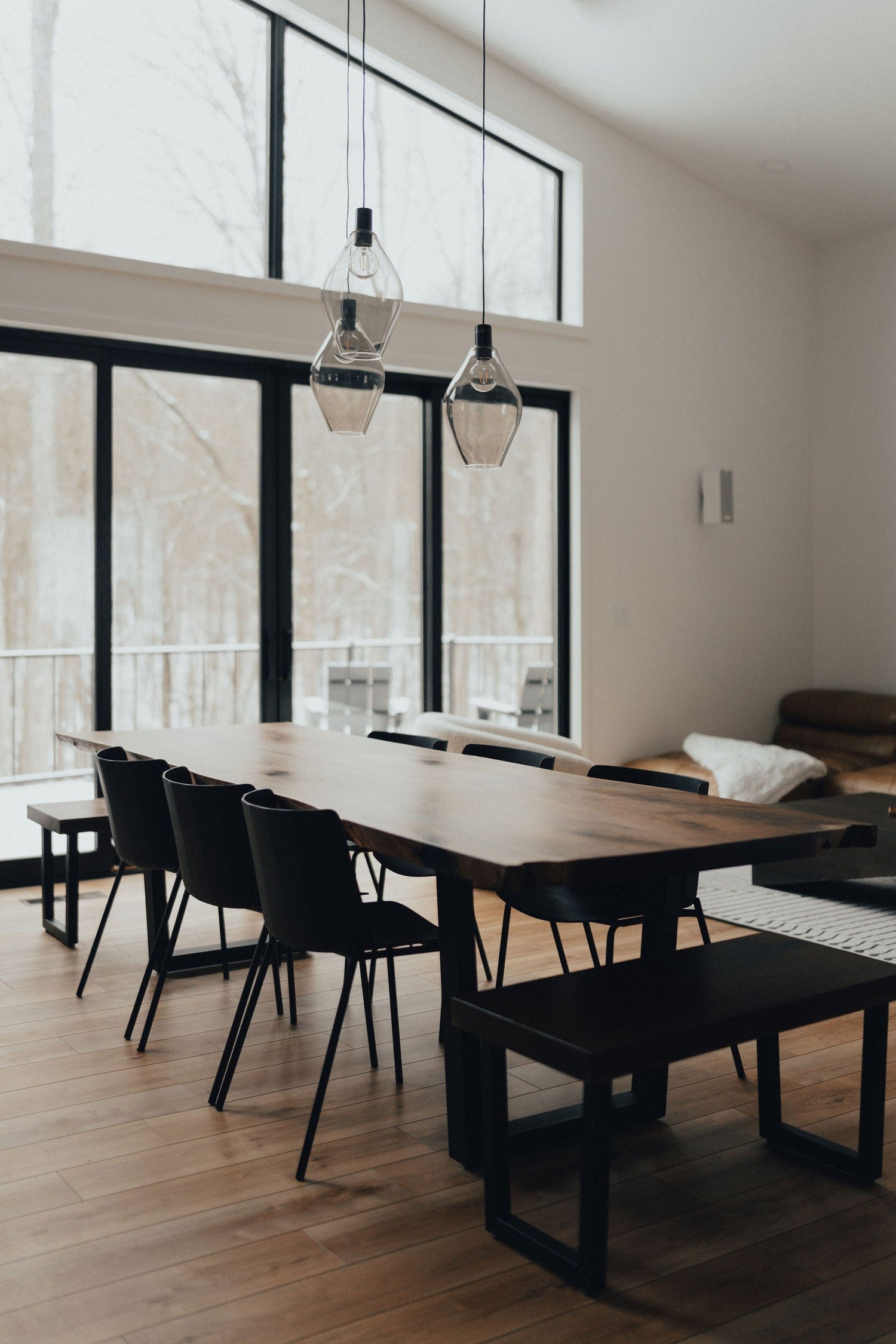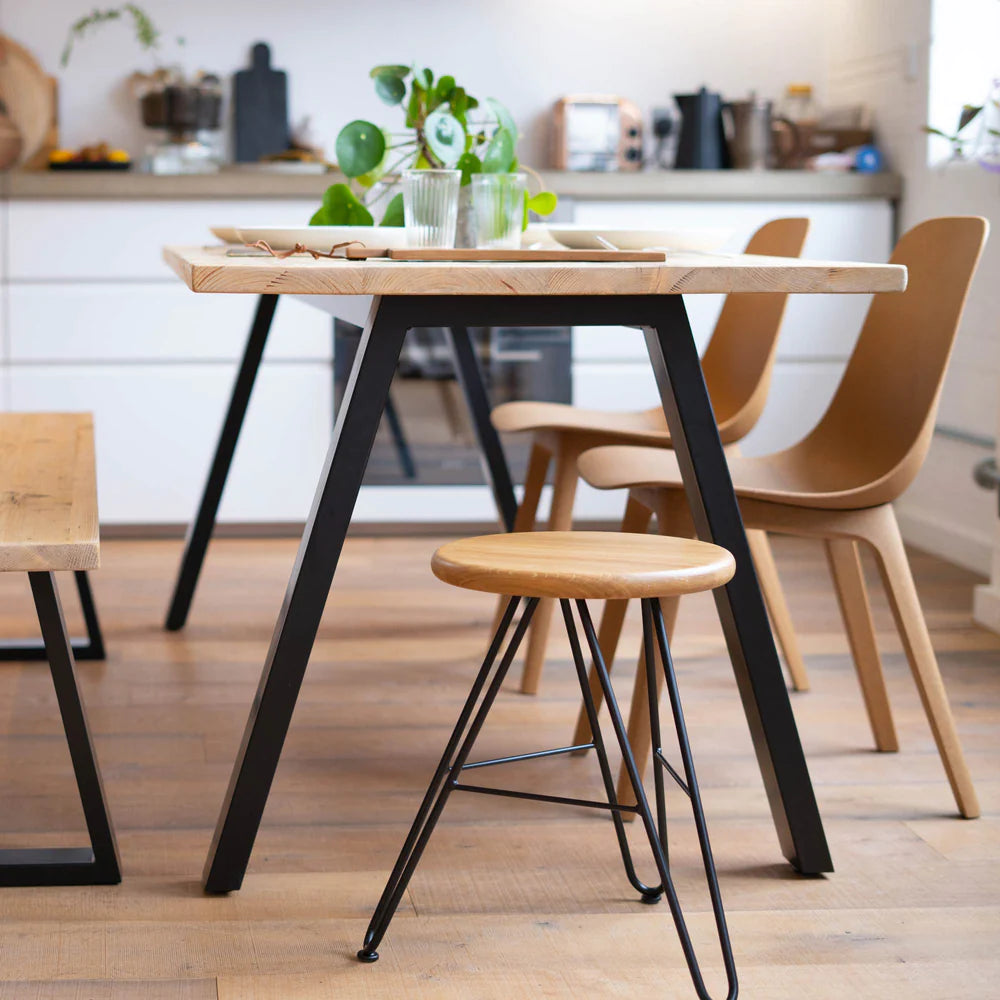How Dining Room Table Legs Can Change the Entire Aesthetic of Your Room
How Dining Room Table Legs Can Change the Entire Aesthetic of Your Room
Blog Article
Professional Tips for Setting Up Dining Area Table Legs for Optimum Stability
When it comes to mounting dining room table legs, achieving optimum security is vital for both performance and visual appeals. The process starts with choosing the right products and hardware, followed by thorough positioning and consideration of weight circulation. Each step plays a crucial duty in making sure that the completed item stands up to everyday usage without compromising security or layout integrity. However, comprehending the nuances of these aspects can considerably affect the overall end result. What certain techniques can improve stability even better?
Choose the Right Legs
When picking the ideal legs for your dining-room table, it is important to think about both functionality and appearances. The legs you pick will considerably influence the total design and stability of the table. Examine the table's planned usage; if you anticipate constant gatherings, stronger legs, such as those made from solid wood or metal, may be much more appropriate, as they provide boosted longevity and assistance.
Typical dining tables generally vary from 28 to 30 inches in height, so ensure the legs line up with this standard for comfort. Tapered legs can include a contemporary touch, while turned legs might share a more classic visual.

Select Appropriate Hardware
Exactly how can the best hardware enhance the stability and longevity of your dining-room table? The selection of suitable equipment is critical to making certain that the legs of your table are firmly attached and able to endure regular usage. Top notch screws, bolts, and braces offer the essential stamina to sustain the weight of the table, along with any extra lots positioned upon it during events or meals.
When selecting screws, choose those made from resilient materials such as stainless-steel or brass, which stand up to corrosion and preserve stability gradually. The size of the screws is similarly important; they should penetrate deeply into the table's framework without endangering integrity. For bolted connections, consider using lock washers to stop loosening up because of vibration or movement.
Furthermore, using corner braces can include additional support, especially for larger tables or those with larger tops. These braces distribute weight uniformly and assist preserve the table's form. Making certain that the equipment you choose is suitable for the specific products of your table will better boost its total security and durability, allowing you to appreciate your dining experience for several years to find.
Ensure Appropriate Alignment
Proper placement of dining space table legs is essential for both aesthetic allure and functional security. To attain optimal positioning, start by measuring the distance from the table's edges to the leg add-on points.
Utilize a level during setup to confirm that each leg is vertical to the table top. It is suggested to note the desired leg settings on the bottom of the table with a pencil or masking tape prior to safeguarding them.
Additionally, verify the alignment after the preliminary screws are tightened, as modifications may be required before completely protecting the hardware. By prioritizing appropriate positioning, you not only enhance the table's overall design but additionally ensure that it remains useful and secure for several years to find.

Take Into Consideration Weight Circulation
After guaranteeing proper placement of the dining room table legs, it is necessary to take into consideration weight distribution to boost security and functionality. dining room table legs. Correct weight distribution is crucial in protecting against wobbling and ensuring that the table can sustain its intended tons without risk of tipping or falling down
When positioning the legs, guarantee they are placed at equivalent distances from the facility of the table to equally distribute the weight throughout the structure. Take into consideration the weight of the tabletop and any kind of items that will often visit the site rest on it, such as ornamental items or tabletop home appliances. Tables with larger surface areas ought to ideally have legs located closer to the corners, as this takes full advantage of the base of support and lessens the threat of instability.
Furthermore, if the table is planned for usage in a high-traffic area, think about using much heavier products for the legs or including stabilizing aspects, such as cross-bracing or a reduced rack - dining room table legs. These adjustments can assist preserve equilibrium and avoid changing throughout use. Eventually, a well-considered weight circulation approach will considerably improve the table's general efficiency, guaranteeing it remains a eye-catching and useful focal point for your eating space
Test Stability Before Use
Testing the security of the eating space table before use is an essential step that needs to not be forgotten. If click for more info the table reveals instability, determine the legs or joints that may call for modification.
Next, check that all screws and bolts are tightened correctly. Loosened links can result in instability and potential damages in time. If necessary, make use of timber glue on joints to boost security, guaranteeing to permit appropriate drying time.

Conclusion
Finally, the installation of dining-room table legs needs mindful factor to consider of products, alignment, hardware, and weight distribution to attain maximum security. By picking sturdy legs and high-quality fasteners, making sure specific positioning, and distributing weight equally, the structural stability of the table can be significantly boosted. Conducting a security test prior to normal usage even more guarantees that the table will hold up against daily stress, therefore giving a trusted and safe eating experience.
When it comes to installing eating area table legs, attaining maximum security is vital for both capability and aesthetics. The legs you choose will significantly influence the total Website layout and stability of the table (dining room table legs). Standard eating tables normally vary from 28 to 30 inches in elevation, so ensure the legs straighten with this requirement for comfort.Correct placement of dining area table legs is vital for both aesthetic charm and practical stability.In verdict, the installment of dining area table legs calls for cautious consideration of products, alignment, weight, and hardware circulation to accomplish maximum security
Report this page